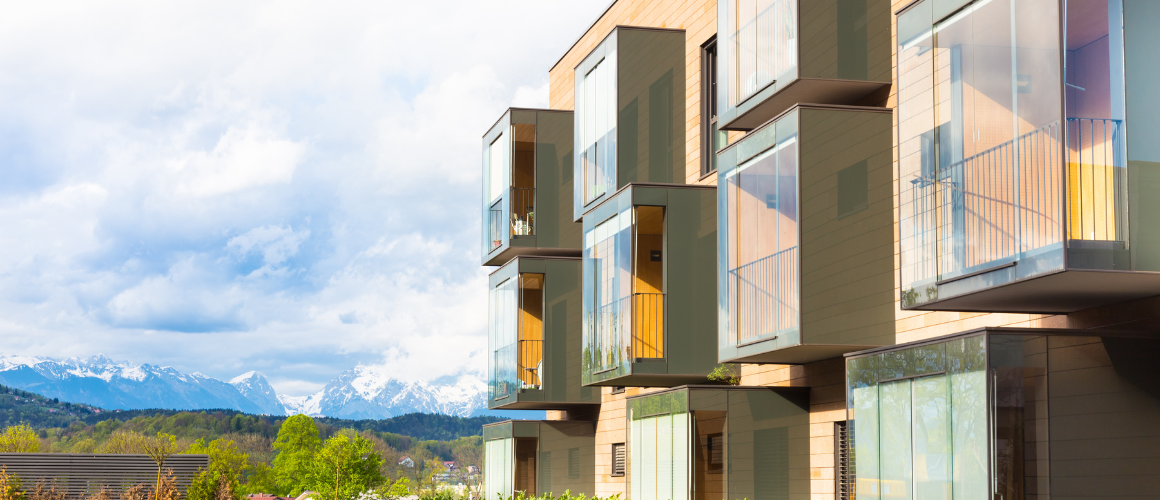
The Dawn of Digital Design: How BIM Shapes Modern Architecture
Imagine stepping into a world where buildings are smarter, construction is seamless, and design boundaries are constantly being pushed to new horizons. This isn't a distant dream; it's the future we're building today, thanks to the magic of Building Information Modeling (BIM) and a wave of digital innovations sweeping through the architecture industry.
Gone are the days of cumbersome blueprints and manual drawings. BIM has revolutionized the way we plan, design, construct, and manage buildings. It's like having a crystal ball that shows not just how a structure looks but how it lives and breathes over its lifecycle.
But BIM isn't the only star in the sky. Technologies like artificial intelligence, virtual reality, and 3D printing are joining hands with architects, turning what was once thought impossible into the standard. This dance of technology and creativity is leading us into a future where buildings are not only beautiful but intelligent and sustainable too.
So, let's embark on this journey together. A journey that takes us through the evolving landscape of architecture, where innovation meets imagination, and where the future of building is not just seen but felt. Welcome to the prophesied future of architecture, where every brick tells a story, and every design draws a new horizon.
The story of architectural practices is a fascinating journey from the drawing board to the digital age. Once upon a time, architects labored over large drafting tables, with pencils and rulers as their trusty tools, meticulously drawing every line by hand. This era of manual drafting was not just time-consuming but left a wide margin for error, especially as projects grew in complexity.
Then came the revolution of computer-aided design (CAD). Suddenly, architects could draft with a click and drag of a mouse, making revisions easier and design processes faster. Yet, even as CAD transformed architectural drafting, something even more groundbreaking was on the horizon.
Enter Building Information Modeling (BIM). BIM wasn't just another step; it was a giant leap. It allowed architects, engineers, and construction professionals to collaborate on digital models that contained not just visual information but data about every aspect of a building's lifecycle. This holistic approach marked a radical departure from traditional methods, setting the stage for a future where the boundaries of architectural design are continually expanded.
This evolution from pencils to pixels embodies the relentless pursuit of efficiency and precision in architecture. It reflects a profession that's always looking forward, eager to embrace new technologies to create spaces that are not only functional and beautiful but sustainable and intelligent too.
At the heart of modern architecture lies Building Information Modeling (BIM), a revolutionary approach that transcends traditional drafting and design. BIM is not just about creating detailed digital models of buildings; it's about embedding these models with intelligent, structured data that cover every aspect of a building's life, from conception to demolition.

First up, let's talk about visualization. BIM allows us to create 3D models that are not just visually stunning but also incredibly detailed. Architects and clients can walk through these models, experiencing spaces before they're built, making design decisions more intuitive and informed.
But BIM goes beyond the visual. It introduces a level of collaboration that was previously unimaginable. Architects, engineers, and construction professionals can work on the same model, in real-time, from anywhere in the world. This means fewer misunderstandings, less rework, and a smoother construction process overall.
Sustainability is another core component. BIM helps in designing buildings that are energy-efficient, resource-efficient, and sustainable over their entire lifecycle. By analyzing sunlight, wind patterns, and other environmental factors, BIM enables architects to create buildings that are in harmony with their surroundings.
Efficiency and accuracy in construction are also significant benefits. BIM models can be used to simulate construction sequences, identify potential conflicts before they occur on-site, and even assist in the management of materials and waste, reducing both cost and environmental impact.
Finally, BIM is about future-proofing buildings. It provides a detailed digital record of every element of a building, which can be incredibly valuable for maintenance, renovations, or adaptations down the line.
In sum, BIM is more than just a tool for creating models; it's a comprehensive approach that integrates design, construction, and building management, paving the way for a future where architecture is not only more beautiful and functional but also more sustainable and resilient.
As we sail into the future, architecture and Building Information Modeling (BIM) are at the forefront of a tech revolution. Let's dive into some of the most exciting trends shaping this space.
3D printing is first on the list, transforming the way we think about constructing buildings. Imagine printing parts of buildings, or even entire structures, layer by layer. This technology promises to reduce waste, lower construction costs, and potentially speed up the building process significantly.
Then there's the game-changer duo: Augmented Reality (AR) and Virtual Reality (VR). These technologies are making it possible for architects and clients to walk through virtual models of buildings before a single brick is laid. AR and VR not only improve the design process but also help in identifying potential issues early on, making construction smoother and more predictable.
Cloud collaboration is another trend worth mentioning. With BIM data stored in the cloud, everyone involved in a project can access, update, and share information in real time. This seamless collaboration can lead to more efficient workflows and helps keep everyone on the same page, no matter where they are in the world.
The Internet of Things (IoT) is weaving its way into BIM, too. Sensors embedded in buildings can collect data on everything from energy usage to occupancy patterns. This information can then be used to make buildings more efficient and comfortable for the people who use them.

Lastly, let's not forget about drones. These flying cameras are revolutionizing site surveys and inspections. They can quickly and safely gather data over large areas, providing valuable insights that help architects and builders make better decisions.
Each of these trends, from 3D printing to drones, is making the architecture field more exciting, efficient, and innovative. They're not just shaping the future of BIM; they're redefining the very essence of architecture, promising a world where buildings are smarter, construction is cleaner, and designs are more dynamic than ever before.
In the evolving world of architecture, collaboration and innovation are not just buzzwords; they're the foundations of progress. Through Building Information Modeling (BIM), architects, engineers, and builders are breaking down silos and coming together in ways we've never seen before. This unity is the backbone of modern architectural marvels, allowing for a seamless flow of ideas and information.
Imagine a world where every change in design is instantly shared with every person involved in a project, from the architect to the construction worker on site. That's the power of BIM and cloud-based technologies. They ensure that everyone is on the same page, reducing errors, saving time, and fostering a culture of open communication and collective problem-solving.
Innovation, powered by digital tools like 3D printing and AR/VR, is pushing the boundaries of what's possible. These technologies are not just tools; they're catalysts for creativity, enabling architects to explore new forms and structures that were once deemed impossible.
Together, collaboration and innovation in the realm of BIM are not just shaping the future of architecture; they're reshaping our world, creating spaces that are more sustainable, efficient, and in tune with the needs of their inhabitants. The future is bright, and it's being built together, one digital brick at a time.
In the world of architecture and BIM, real-world applications illuminate the potential and power of these technologies. Consider the case of a high-profile skyscraper in New York City. Utilizing BIM, the design team was able to coordinate complex structural elements, HVAC systems, and electrical wiring seamlessly, ensuring that every component fit perfectly into the puzzle without clashing with others. This coordination helped in avoiding costly mistakes and delays during construction.
Another inspiring example comes from a residential complex in Germany. The project team leveraged BIM for detailed energy modeling, which significantly improved the building's energy efficiency. By analyzing sunlight exposure and thermal dynamics, the architects designed the building to maximize natural light and minimize heat loss, resulting in lower energy costs and a smaller carbon footprint.
Lastly, an innovative project in Asia utilized drone technology for site surveying before construction began. The drones collected accurate topographical data, which was then imported into the BIM model. This approach not only saved time but also ensured that the design respected the natural landscape, reducing environmental impact.
These case studies showcase the transformative impact of BIM and related technologies in the architectural field. They highlight how embracing digital tools and collaborative approaches can lead to more efficient, sustainable, and innovative design and construction processes.
As we wrap up our journey through the prophesied future of architecture, it's clear that BIM and emerging technologies are not just shaping buildings; they're shaping futures. From 3D printing to AR, VR, and beyond, these tools are revolutionizing how we conceive, build, and inhabit spaces. They promise a world where architecture is not only more sustainable and efficient but also more in tune with human needs and environmental constraints. As architects and builders embrace these innovations, we're not just witnessing the evolution of a profession but the dawn of a new era in human habitat design. The future of architecture is bright, and it's being built on the foundations of collaboration, innovation, and digital transformation.